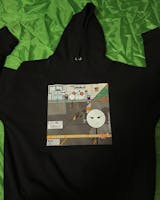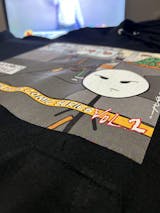Although custom heat transfer printing is easy to do, some mistakes can occur. Due to the most common errors, printing results may not be satisfactory. If you are also experiencing unwanted results in your printing, you may be doing something wrong somewhere. At this point, you should look at the errors that other users also encounter. These mistakes can help you achieve the right results in your print results. In this content, we will focus on the most common mistakes and solutions in heat press printing.
Insufficient Temperature
Hot stamping is a printing technique that is naturally applied using heat. Therefore, the most important factor in its application is temperature. If the correct temperature control is not provided, the printing results are not satisfactory. Because insufficient temperature control results in adhesion problems. So how do you know if there is enough temperature in the printing machine? A temperature gun or a heat press test kit will do the trick.
Wrong Placement
It is important that your design is not skewed in heat press printing. For this reason, it is essential to print by positioning it correctly. Skewed and off-center prints will not be liked by customers. This is also negative for the business as it affects professionalism. For this reason, you should make sure that you align it correctly before heat printing. Although this process requires attention and patience, the results are worth it. You can also take a look at design placement standards.
Using Accessories
Most problems in the heat printing process are caused by not using certain accessories. Although they may seem unnecessary, they should actually be used for satisfactory results. Using a cushion in DTF transfer printing ensures even pressure. Solid and even surfaces are important for effective results. If you have applied too much heat, there is also a recommended accessory for this. Applying too much heat causes the print to stick and produce prints that are not durable. However, you can protect your print from unwanted heat damage with Teflon-style sheets.
Wrong Peeling Technique
Exfoliation is an important step in heat transfer. In fact, some users use incorrect techniques when performing this step. It should be noted that the peeling technique will vary according to the transfer material. In other words, the peeling technique you will use on fabric or wood is not the same. Because one is applied with hot peeling and the other with warm/cold peeling technique. At this point, you should consider the peeling technique specified in the printing instructions. At the same time, in high volume orders, it will be useful to prefer the hot peeling technique as cold peeling will slow down the transfer process.
Neglecting the Preparation Process
Every step is important in the DTF transfer process and therefore none should be neglected. The preparation step also requires following some tips for pre-treatment. If pre-treatment is not done, it is possible to face premature peeling and adhesion problems.
You must therefore pre-treat correctly. This will ensure better adhesion of the DTF printing material. We recommend starting by cleaning the substrate. You can use a suitable cloth to remove dust, dirt and similar residues. You can use pretreatment solutions for better adhesion of the transfer material. You can get the best results from heat transfer if you apply the pretreatment solution to the substrate.
Raising the Print Area
Uneven results can occur if you do not raise the print area. If you are DTF printing on difficult areas such as seams, zippers and collars, you can use some accessories. Even a mouse pad can be useful in this process.








